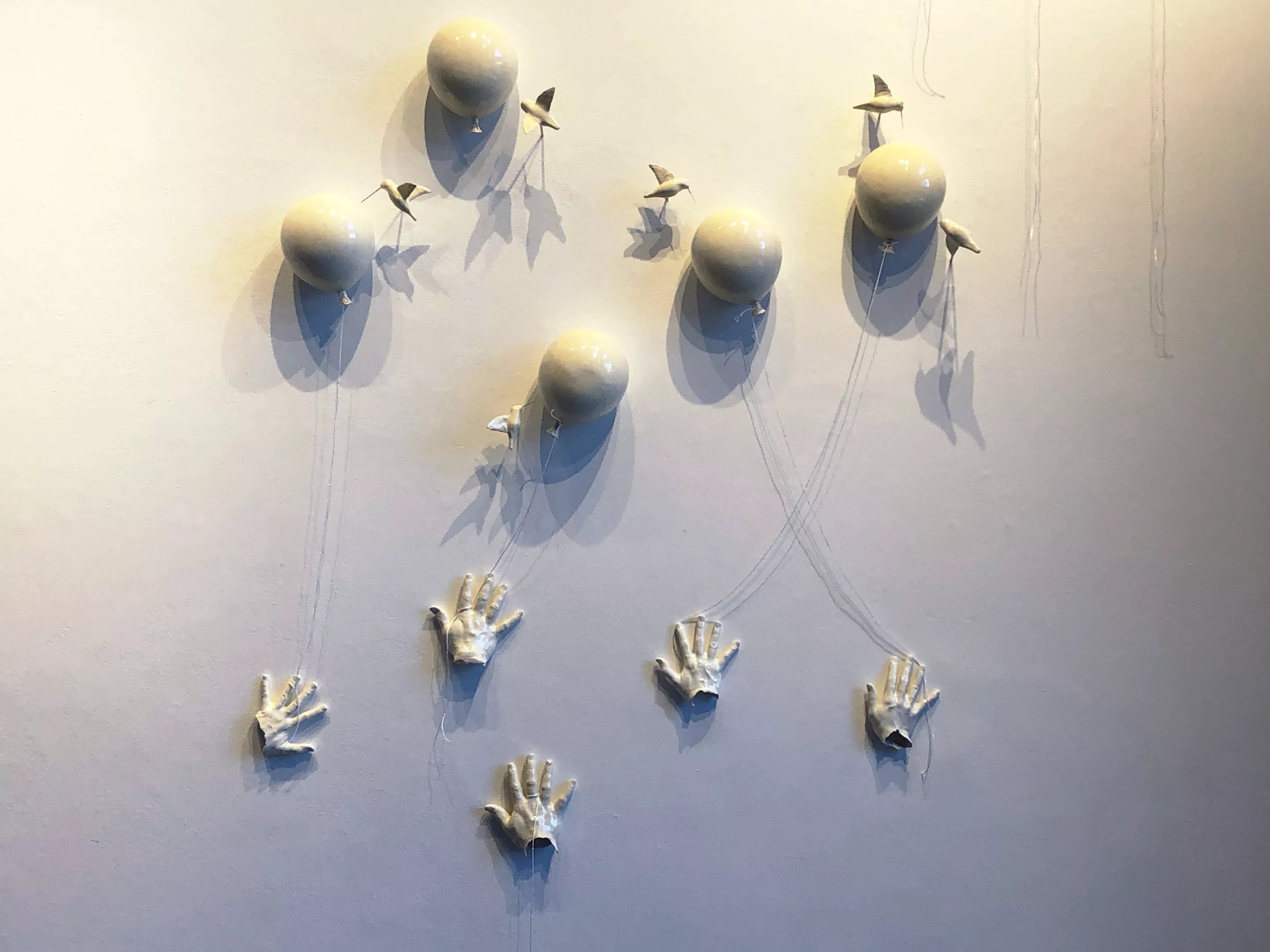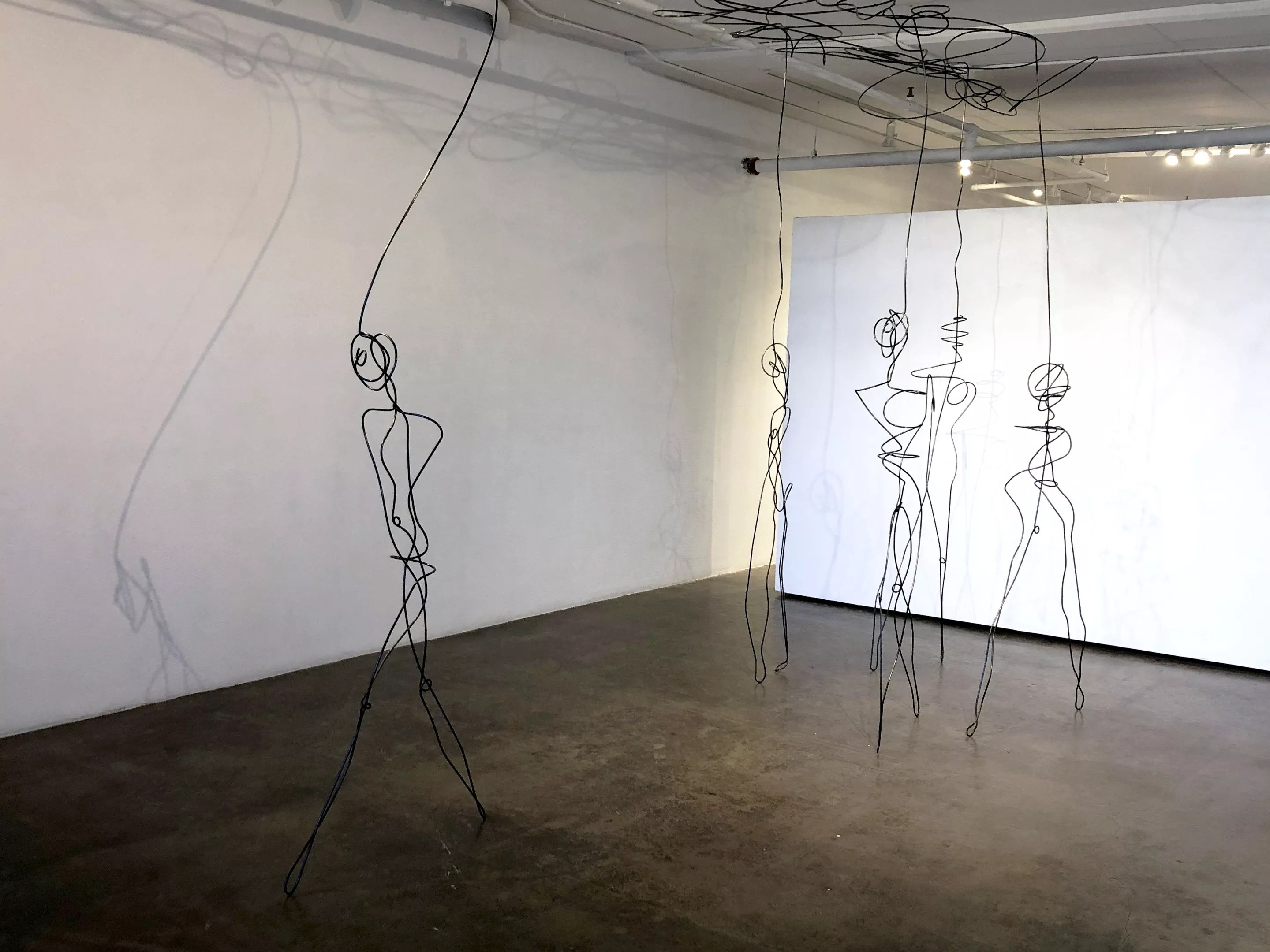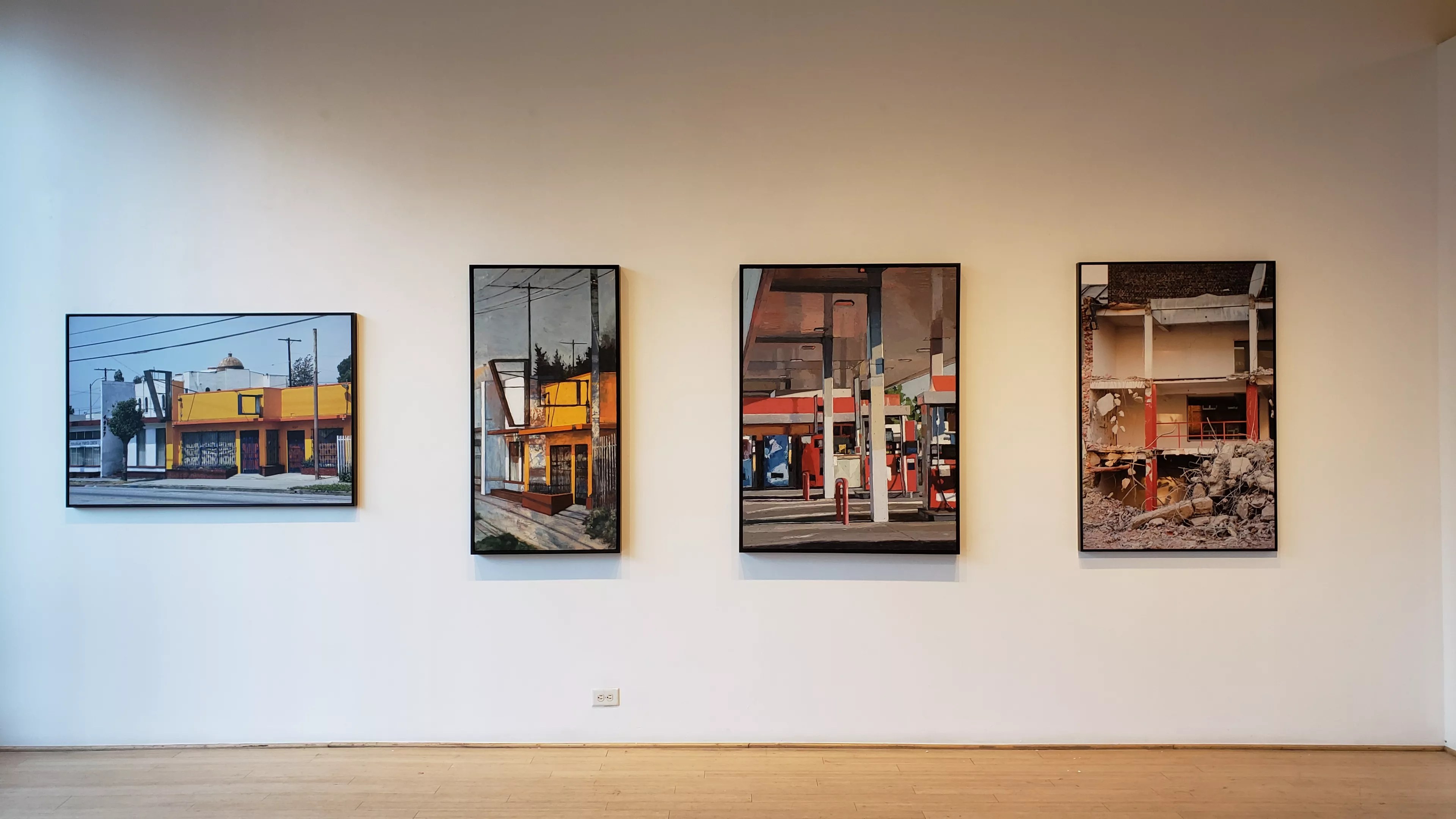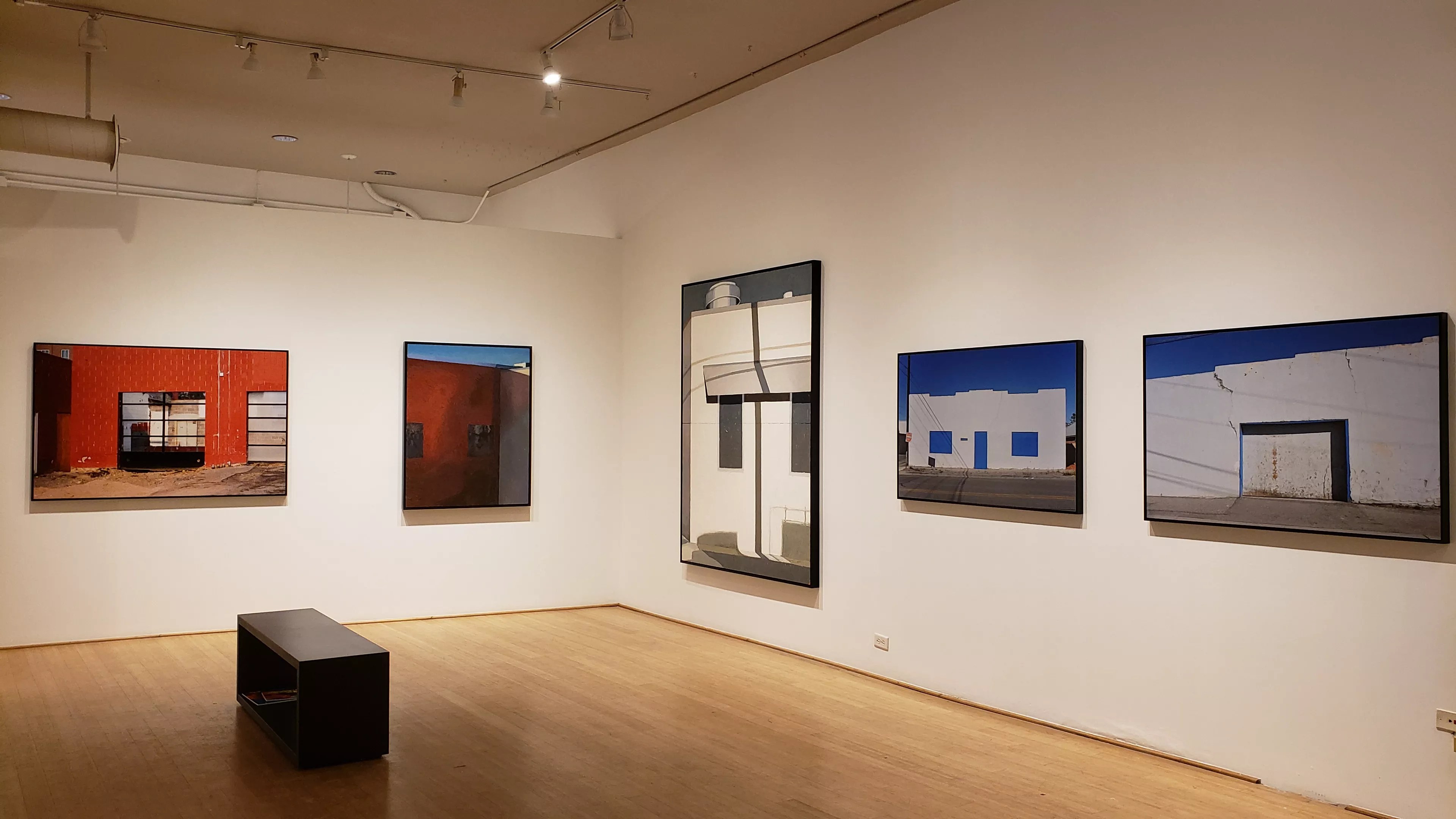
Courtesy of Walker Fine Art

Audio By Carbonatix
Museum curators will sometimes take a year or more to organize an art show, so pity the poor gallery directors whose relentless, year-round roster calls for a new exhibition every four to six weeks. These directors often take different paths to reach their common goal of a successful, distinctive show, as evidenced by the current offerings at Walker Fine Arts and Michael Warren Contemporary.
I’d expected these shows to resonate with each other but they didn’t, largely because of the underlying strategies guiding how they were put together. Walker’s Layers of Existence is a group show, with artists who are only loosely linked to each other and a randomness to the selections. In contrast, there’s a sharp focus to Michael Warren’s Life Cycles: works by Sharon Feder & Dallas Parkins, in which individual pieces by two artists are virtually interchangeable, they’re so tightly interwoven aesthetically.
Layers of Existence is a free-for-all, with conceptual art, contemporary realism and abstraction distributed around Walker’s large, multi-part space. The show opens with wall installations by Meagen Svendsen, in which casts of slightly under-inflated balloons are the principal device. The most significant is “The Thing With Feathers,” in which the balloons, cast in white porcelain, are seen floating into the sky, their string tails hanging beneath them; below are casts of the hands of the artist and her husband and son, who presumably have let go of the balloons. Into this whimsical scene, hummingbirds are introduced, but while they add another lighthearted element, they also introduce a dark undercurrent: Instead of beaks, the birds have needles, and they are heading for the balloons.

Gail Folwell’s figural group, “Universal Consciousness,” made of steel rods.
Courtesy of Walker Fine Art
Beyond the Svendsens are two sculptural installations by Gail Folwell. The grid of heads on raised blocks is intriguing, but a very different figural group in continuous steel rods, “Universal Consciousness,” is a genuine knockout. Folwell bends the thick rods to carry out three-dimensional scribbles of standing nudes, which are interconnected above their heads by a canopy of thought bubbles done in the twisted rods.
We’re thankful for you. Are you thankful for us?
We feel thankful for our staff and for the privilege of fulfilling our mission to be an unparalleled source of information and insight in Denver. We’re aiming to raise $50,000 by December 31, so we can continue covering what matters most to this community.
Help us continue giving back to Denver.
If you cock your head and squint your eyes, you can almost make the Svendsens connect with the Folwells, but you’d throw your back out if you tried to tie in the next artist, Sabin Aell. Best known for her wall painting, here she’s represented by elegant and mostly smallish abstracts. They’re rectangular panels in brushed steel that has been pierced to reveal glass panels underneath, and behind the glass, abstract prints are visible. The way the materials interact produces a decidedly luxurious appearance.
Across the gallery are works loosely associated with Aell’s, but only because they are also abstracts: Farida Hughes’s poured color-field abstractions in resin on panel. They recall the influential work of Helen Frankenthaler, but instead of the latter’s thin stains of color, Hughes uses thick puddles of it.

Retro paintings by Peter Illig.
Courtesy of Walker Fine Art
Between the Aell and Hughes abstracts are works by Peter Illig and Mark Penner-Howell, who both explore contemporary realism infused by a neo-pop sensibility. Illig likes to ape the look of 1940s and ’50s-era noir-ish illustration, depicting femmes fatales, pinups and other “guy stuff” like wrenches, airplanes and muscle cars. Illig crowds his compositions with improbable details that could seem surreal, especially the poses, but his paintings don’t wind up being surrealistic.
Penner-Howell’s style is much slicker than Illig’s, and his mixed-media paintings have a graphic presence that makes sense, since he also does commercial illustration. The most remarkable feature of a Penner-Howell is the refined level of detail he achieves, all meticulously carried out using digital transfers, acrylics and pencil. In “Nest,” for example, Penner-Howell has positioned a sleeping woman in a gigantic nest made of woven conduit and other pieces of construction debris, the whole thing floating in some kind of sky map.

A pair of photos by Dallas Parkins bookend a pair of paintings by Sharon Feder.
Courtesy of Michael Warren Contemporary
In contrast to Layers of Existence, Life Cycles at Michael Warren, with paintings by Sharon Feder and photographs by Dallas Parkins, is virtually seamless. When you first catch sight of the big north wall, which is visible even from the street, you might wonder if you’re looking at a quartet of photos, or maybe four paintings? As you get closer, though, you realize that two of the works are Feder’s paintings, and two are photos by Parkins. It’s hardly remarkable that Feder and Parkins do related work, since they are married, but there’s a twist to their story: They were each doing this kind of work before they met each other. Even so, there’s been a convergence in sensibilities since then, seen in what Mike McClung, the gallery’s director, describes as a “call and response” quality.
This characteristic is clearly expressed by a pair of pieces depicting the same subject: “Mid-City Storefront,” an archival pigment print on panel by Parkins, and Feder’s “Next #19.” The photo enlargement of a vacant row of storefronts falls into the new, topographic category of contemporary photography, in which adherents are interested in turning the unsightly into the beautiful. Parkins uses his perfect eye for composition for on-target initial cropping of the subject done in the camera’s viewfinder; this talent is enhanced by his ability to capture compelling found-color relationships, like the horizontal bar of Velveeta yellow next to the white bars receding behind it, with the washed-out denim-blue of the sky above. With his skills in composition and color, Parkins is able to simplify the complex scene into a straightforward relationship of colored fields and volumes.

Two Sharon Feder paintings hanging on adjacent walls (center) bracketed by Dallas Parkins photos.
Courtesy of Michael Warren Contemporary
Feder’s related painting, “Next #19,” depicts the same buildings from a diagonal, rather than Parkins’s head-on approach. Though it looks photographic from a distance, the piece is very painterly, and fairly abstracted. Feder’s colors have complicated tones within a dry and dusty palette, and have been painstakingly applied in mostly short and precise brush strokes. She’s conceived of the structures as dense tangles of overlapping and intersecting planes, lending the rendition an almost skeletal, transparent look; there’s also a predominating quasi-geometry that defines the overall composition. This is architecture depicted architectonically.
In some of the Feders, the artist’s reductive geometry overtakes the whole painting, turning it into something just this side of a color-field abstraction while still serving as a representational view. A good example is “Building # 30,” nominally an industrial building in twilight. Feder has constructed a relationship of rectilinear shapes, with the deep-blue wall accented by dazzling golden-yellow windows. As you take it in, the painting can seem completely abstract, yet as the small details start to register – of the roof and sky in a stripe at the top and the subtle shadow cast against the blue wall – the abstract steps back and a convincing representation of the building clicks into view.
While the Walker show is more like a set of virtually unrelated vignettes, all worth seeing, Life Cycles is an extremely impressive, coherent outing that shouldn’t be missed.
Layers of Existence, through January 4 at Walker Fine Art, 300 West 11th Avenue, #A, 303-355-8955, walkerfineart.com.
Life Cycles: works by Sharon Feder and Dallas Parkins, through January 11 at Michael Warren Contemporary, 760 Santa Fe Drive, 303-635-6255, michaelwarrencontemporary.com.